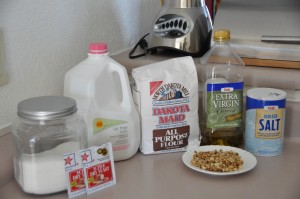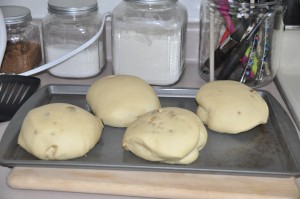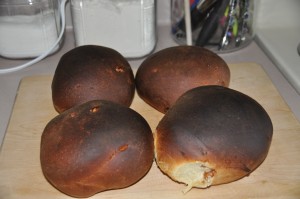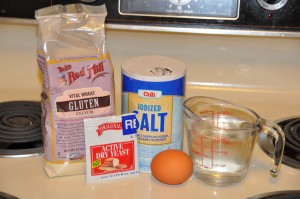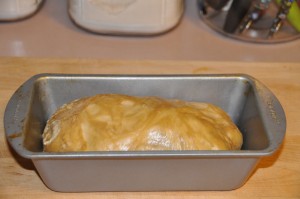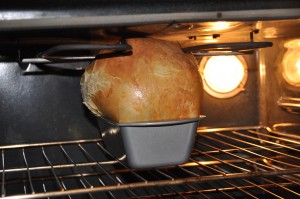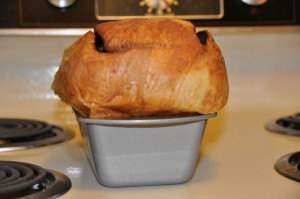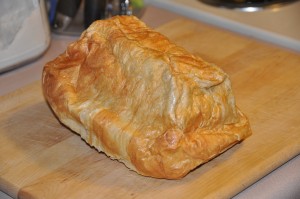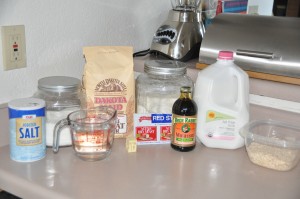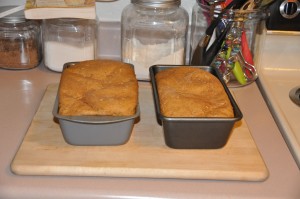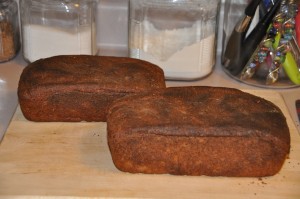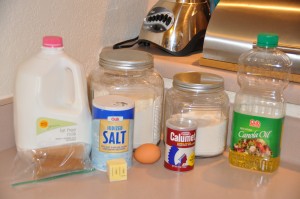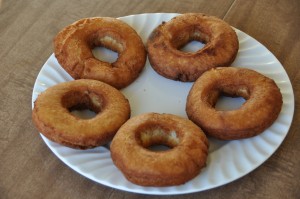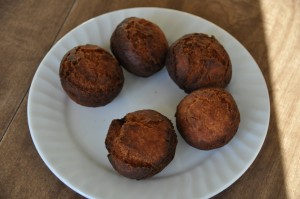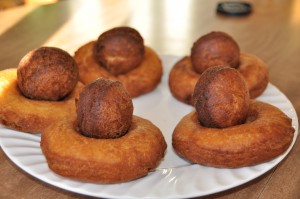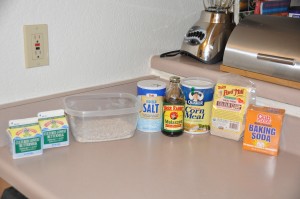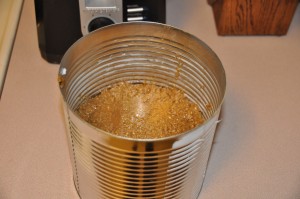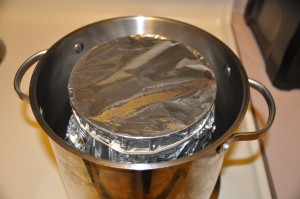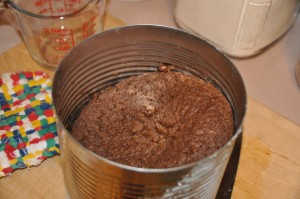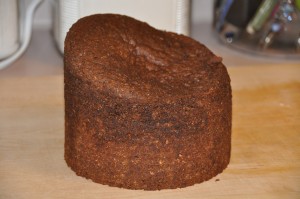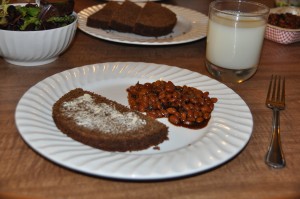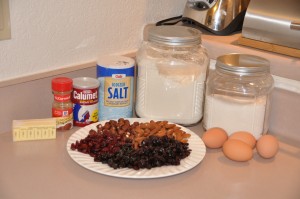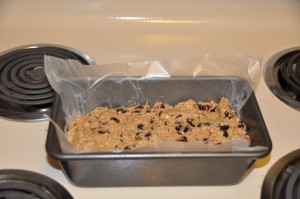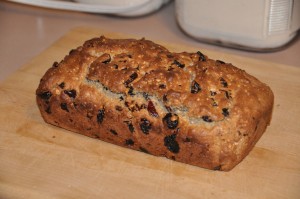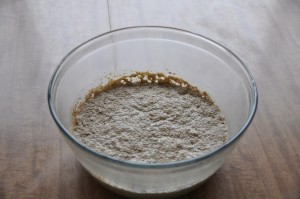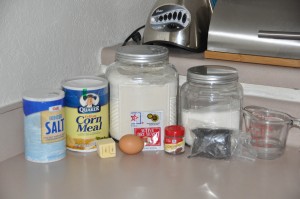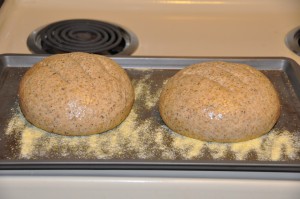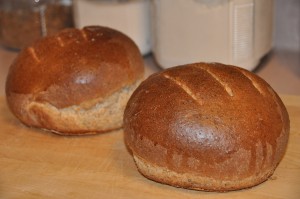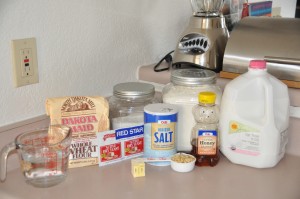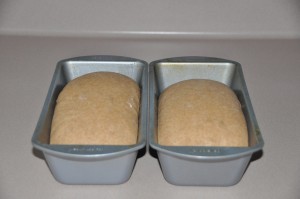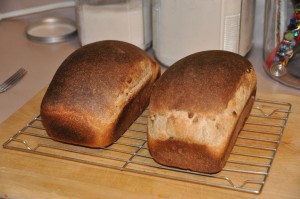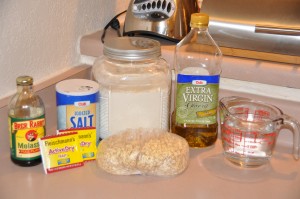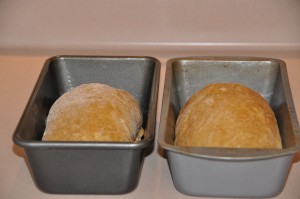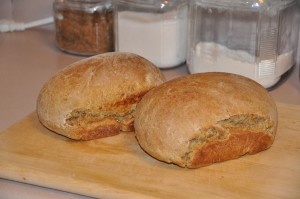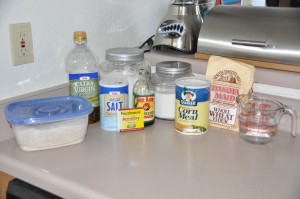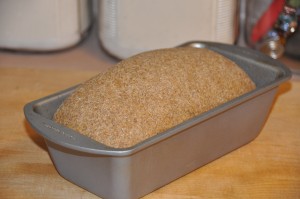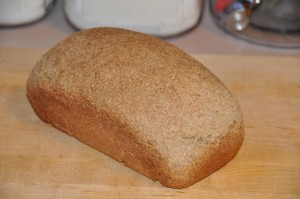“This recipe comes from a delightful cookbook called Good Things by an English writer, Jane Grigson…It makes one of the most attractively flavored and textured breads I have eaten in a long time.”
-James Beard, Beard on Bread
In an effort to make my March 27 deadline, I am doing three recipes this weekend. The first is Jane Grigson’s Walnut Bread from Southern Burgundy.
Here are the ingredients:
Since I couldn’t find walnut oil, I substituted olive oil, and I left out the chopped onion since I didn’t really like it in Dill-Seed Bread.
I mixed all of my ingredients, except the walnuts, together to form a nice soft dough that was a pleasure to work with (especially after Gluten Bread).
Although the recipe indicates a rising time of two hours, my dough tripled in size after an hour and half, so I punched it down and kneaded in the chopped walnuts. Then, I shaped it into four round loaves and let it rise for another 45 minutes.
I baked the loaves at 400 degrees for 40 minutes. They ended up a bit over-browned, so I probably could have shorted the baking time a few minutes.
Jane Grigson’s Walnut Bread from Southern Burgundy is absolutely lovely. Personally, I think it tasted wonderful without the onions and a subtle hint of olive oil. The texture is perfect: a thick, crusty exterior with an incredibly light and fluffy inside.

